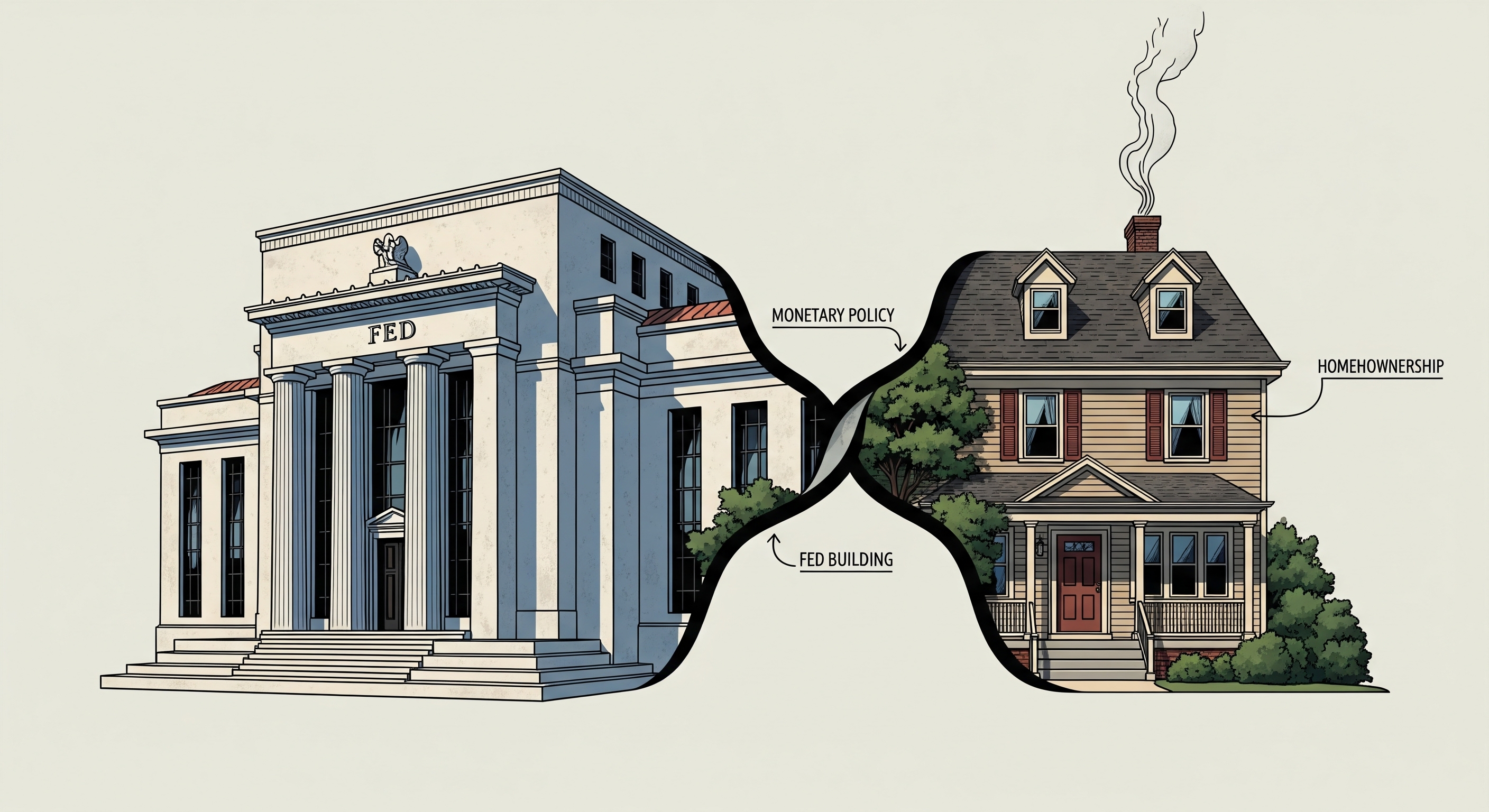In the high-stakes world of home buying, all eyes seem to be fixed on one institution: the Federal Reserve. Every meeting is scrutinized, every speech parsed, and every potential rate cut is awaited with bated breath. But this obsession is a costly distraction. While the Fed holds its key interest rate steady, locked in a stalemate with a confusing economy, the forces that truly shape your mortgage rate are playing a different game entirely.
The truth is, the Fed isn't going to cut rates anytime soon, and for prospective homeowners, that shouldn't matter. It’s time to stop trying to predict the unpredictable and instead focus on the factors you can actually control.
The Fed’s Tightrope Walk: Why a Cut Isn't Coming
To understand why the Federal Reserve is holding firm, you have to look at the conflicting data flooding its boardroom. The central bank is walking a tightrope, trying to balance its dual mandate of stable prices and maximum employment, and right now, those two goals are pulling in opposite directions.
First, and most importantly, inflation remains the ghost in the machine. While it has cooled from its post-pandemic peak, it is still stubbornly above the Fed's 2% target. The Fed’s preferred inflation gauge, the core Personal Consumption Expenditures (PCE) index, which strips out volatile food and energy costs, is still running at 2.8%. The more familiar core Consumer Price Index (CPI) is even higher at 3.1%. As long as these numbers remain elevated, the Fed has a powerful reason to keep borrowing costs high to prevent inflation from becoming entrenched.
At the same time, the labor market, long a pillar of economic strength, is showing signs of "fragility". The July jobs report was a shocker, with the economy adding a meager 73,000 jobs. Even more alarming were the massive downward revisions for May and June, which erased a combined 258,000 previously reported jobs. This has created a deep division within the Fed itself. Dissenting officials like Governor Michelle Bowman are pointing to this weakness as a reason to cut rates proactively. However, the majority, led by Chair Jerome Powell, remains focused on the inflation fight, adopting a cautious, "data-dependent" approach and signaling they are in "no rush" to make a move.
With strong headline GDP growth providing cover and the threat of tariffs potentially pushing prices higher, the Fed is choosing to wait for more clarity. For homebuyers, this means one thing: don't hold your breath for a rate cut.
The Great Disconnect: Why Your Mortgage Rate Dances to Its Own Beat
Here is the single most important concept for any homebuyer to understand: The Federal Reserve does not set mortgage rates.
The Fed's main tool, the federal funds rate, is the interest rate banks charge each other for overnight loans. A mortgage, in contrast, is a long-term loan, typically for 30 years. While the Fed's actions create ripples that influence the entire economy, the link to long-term mortgage rates is indirect and often unpredictable.
The true benchmark for the 30-year fixed mortgage is the yield on the 10-year U.S. Treasury note. Lenders price their mortgages based on this yield, plus a margin to account for risk. The 10-year Treasury yield isn't set by a committee; it’s determined by supply and demand in the global bond market, which is influenced by a host of factors:
Inflation Expectations: If bond investors believe inflation will remain high in the future, they demand a higher yield on Treasurys. This is why mortgage rates can stay high even when the Fed is on hold.
Economic Growth: A strong economy tends to push yields and mortgage rates higher, while signs of a slowdown push them lower.
Global Events: Geopolitical turmoil can cause a "flight to safety," where global investors pour money into U.S. Treasury bonds, driving their yields—and consequently, mortgage rates—down.
This is why mortgage rates can fluctuate daily, moving in anticipation of economic news, while the Fed acts deliberately every six weeks.
Your Personal Rate: The Factors You Actually Control
Instead of worrying about the Fed, your focus should be on the elements that have the most direct and powerful impact on the interest rate a lender will offer you. Your personal financial health is paramount.
Credit Score: This is your financial report card. Lenders reserve their best interest rates for borrowers with the highest scores, typically 740 and above. A higher score signals less risk and directly translates into a lower monthly payment.
Down Payment: The more money you put down, the lower your loan-to-value (LTV) ratio. A larger down payment reduces the lender's risk, which is often rewarded with a better interest rate.
Debt-to-Income (DTI) Ratio: This measures your total monthly debt payments against your gross monthly income. A lower DTI shows you have more financial breathing room and aren't overextended, making you a more attractive borrower.
While the Fed's policy is a distant storm system, these factors determine the actual weather in your neighborhood. Improving your credit, saving for a larger down payment, and paying down other debts will do more to lower your mortgage rate than any decision made in Washington, D.C.
The path to homeownership isn't about outsmarting the Fed. It's about mastering your own finances. By focusing on what you can control, you can secure the best possible loan and build your future, no matter which way the economic winds blow.



